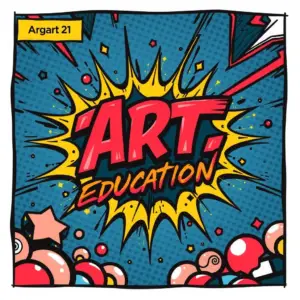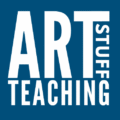
Artificial Intelligence (AI) in Secondary Art & Design Education Conference
at The University of the Arts London, Tuesday 6 July
This was a really interesting and energising conference. It shared the experiences and working practices of experts at the forefront of design, across a variety of fields ‘who used AI as a tool‘. The italics are important because, in English schools, students are often told that using AI is considered cheating, as it claims credit for outcomes that are not of their own devising. The inspiring work that was shared by world-class designers and recently qualified textile designers, demonstrated that this is not the case and that artists and designers simply recognise that
“AI is a tool that I am using to create this piece”
Kristina Thiele
Kristina is a London-based Scandinavian Spatial Designer, VR immersive experience creative and c0-founder of artsXR, an emmersive production studio. She is also an educator at UAL. She talked of the conversations in virtual spaces and her role as a spatial experience designer. Throughout the day the concept of artist or designer was abandoned. It becomes meaningless in the face of the fact that, new tools are being developed so fast, that those at the front of this wave are testing the boundaries anew every week. This was a timely reminder, because, in schools, we often cling to an increasingly limited caricature of the artist exercising skills and understanding to make work which is always ‘handmade’. This didn’t make so much sense on Tuesday.
Mick Grierson Professor and Research leader UAL Institute for Creative Computing, explained that it needs an artists perspective to force models to do things that they are NOT trained to do. That it is an artist who makes a unique thing which is not part of the trained model. Professor Grierson explained that, although AI is a new technology, it raises old questions which reflect our cultures and cultural assumptions. Artists have always operated on this frontier, testing breaking and remaking our assumptions.
“dataset creation is an artform“
Dr Bea Wohl talked of digital craftsmanship; of the fingerprints of the makers embedded in the creation and performance of the thing we see as an impersonal machine. She explained that ‘it’ is created by humans, or rather teams, and that these teams have a geo-political origin and purpose which we ignore at our peril. Once again we were reminded that digital is not impersonal, and that datasets are not perfect – ever.
One of the most significant aspects of the day was in the way that all the staff of UAL shared their work and experience, never trying to tell teachers what they should do, but explaining this is what we do and how we see it. This made it energising as well as informative. Caryn Simonson (Programme Director for Design and Material Practices) shared her work with Liberty and her work developing an AI toolkit for HE providers. This served to suggest that, although schools are significantly behind the curve, models are being developed in HE which can lead to change.
Caryn introduced recent textile design graduates Molly, Luna and Georgia who had worked on an AI pilot programme and shared their practice in combining and layering AI and traditional processes. Once again, demonstrating that AI is a creative tool used purposely in the hands of designers and artists, and not the simple chance novelty that pervades the thinking of much of the schools establishment. It was particularly revealing to hear how each of them had developed their own strategies to retain ownership of their work and to negotiate the relationship between AI and their creative sensibilities.
Throughout the day we were invited to see the work, being shared, from the creators perspective. To see the role of AI as a tool to be mastered, understood, and used with sensitivity, judgement and purpose. Just as artists and designers have always done with the tools they use. In the face of this, the JCQ statement that AI outcomes cannot be used as evidence of a student’s independent achievement seems Quixotic and inappropriate. AI is a creative tool and we SHOULD be able to assess the achievement of students who use it.
For some of us (secondary educators), discussions throughout the day explored ideas about the changing nature of the evidence, of achievement, that new technologies will ultimately force the assessment behemoth to adopt.
Click here for the UAL Position Statement on AI
Click here for the UAL policy on AI and teaching.
Click here for the UAL Student Guide to Generative AI
